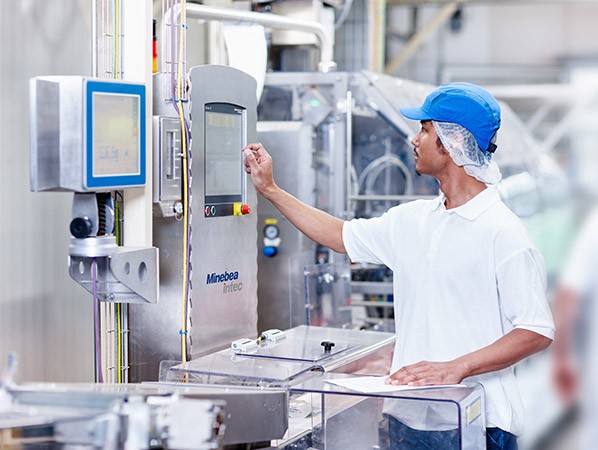
Minebea Intec supports the food industry in increasing the reliability, safety and efficiency of production lines. The global provider of inspection technologies is continuously expanding its checkweighing and foreign body detection product range – recently by introducing the X-ray inspection system Dymond Bulk.
Specially designed for bulk material, the innovative inspection system is particularly suitable for processes between incoming goods and the production line in food industry. Dymond Bulk reliably inspects raw materials like nuts, smaller fruits, frozen vegetables along with spices, coffee and seeds, and eliminates any foreign bodies it identifies. The X-ray inspection system not only identifies foreign bodies made from metal, plastic and stone, but also bits of dirt and glass, which has obvious benefits for all goods that are introduced into the production process “straight from the field”. “In food production, the ‘sorting and cleaning’ stage for raw materials is by no means a precise science,” explains Global Product Manager Thorsten Vollborn of Minebea Intec Aachen. “The X-ray inspection system Dymond Bulk can make a significant difference here, increasing safety and quality parameters even before the transformation process.”
Dymond Bulk stands out because it is so user-friendly. A conscious effort has been made to simplify the complex technology for the user: from real-time detection via colour-based contamination analysis through to straightforward belt replacement and an easy-to-clean inspection system.
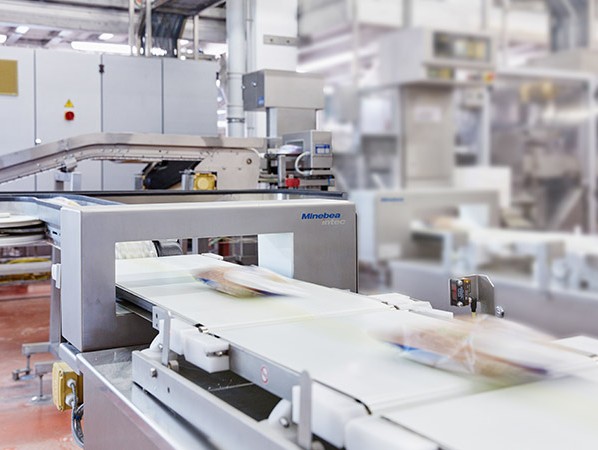
Along the production line, the “packaging” section provides important parameters to ensure product quality. Metal detection, X-ray inspection and checkweighing ensure almost 100% food safety and quality. But what exactly do they do? Dynamic checkweighers control the weight of a package according to packaging regulations for example. Some in-line checkweighers, such as Flexus or Synus from Minebea Intec also offer a so-called trend control. This means that the weight of the filled package is controlled, compared with the target weight and, if appropriate, a readjustment of the filling process is initiated. This optimization of the product filling ensures product savings and thus also an optimization of economic efficiency, especially for "fill-sensitive" foods.
But it is not only the checkweighing that supports the completeness check of pre-packaged foodstuffs. X-ray inspection systems also make an important contribution to product quality. The X-ray inspection systems from Minebea Intec, for example, offer a wide range of standard functions with which product integrity and quality can be guaranteed and can even develop systems for checking special quality attributes on request. X-ray inspection in addition to checkweighing provides the food producer with more information. For example, unwanted clumping of a product is not detected by the checkweigher. For those who want to focus on quality, an X-ray inspection system is recommended as an additional control point – along with the plus in safety it provides with regard to detecting possible foreign bodies made of stone, glass, plastic, etc. that might endanger the consumer.
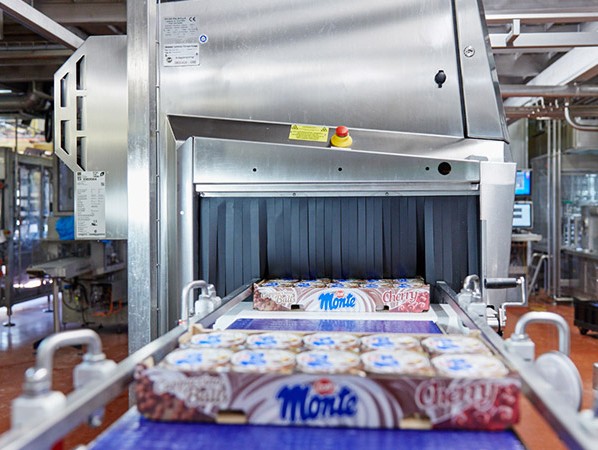
Unwanted foreign bodies in the production process are not only the subject of X-ray inspection. To protect consumers and production facilities, metal detection equipment and systems reliably detect ferrous as well as non-ferrous metals and remove all products contaminated with these metals from the production or packaging line. Depending on the product, vertical or horizontal search coils are used. Vertical metal detection in particular often poses a great challenge for the plant constructor, because it is important to make efficient use of room heights. Special systems with minimised dimensions such as the new free-fall metal detector Vistus from Minebea Intec support the food industry in the realisation of safe filling systems for sugar, baby milk powder, etc...
The X-ray inspection extends the range of detectable foreign objects to include materials such as glass, rubber, stone, plastic and even bone fragments. Individual systems are also available here – depending on the available space, inspection performance and product requirements. For special “hardship cases” such as the detection of glass splinters in glass containers, Dyxim D offers a dual beam inspection system in which two X-ray sources at an angle of 90 degrees also make the usually blind areas on the glass bottom or directly on the glass wall visible.
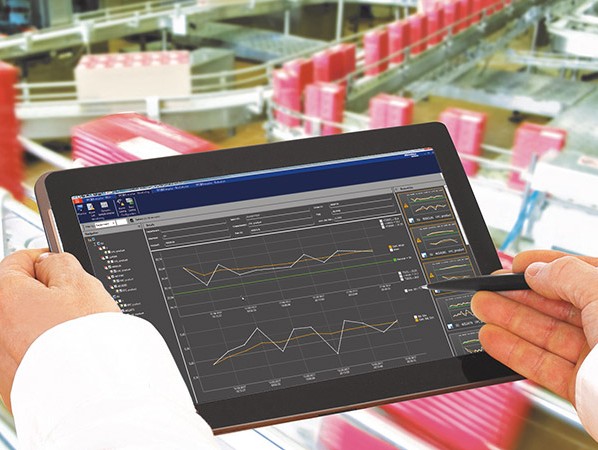
In the age of digitisation, more and more food manufacturers are relying on checkweighers and inspection systems that, in compliance with industry regulations such as HACCP, IFS and BRC, not only avoid costly product recalls, but also preserve the brand image. The image of a rusty nail in a cereal bar reaches millions of consumers through social networks in just a few clicks. The loss of image is difficult to express in numbers, but has a lasting effect on sales.
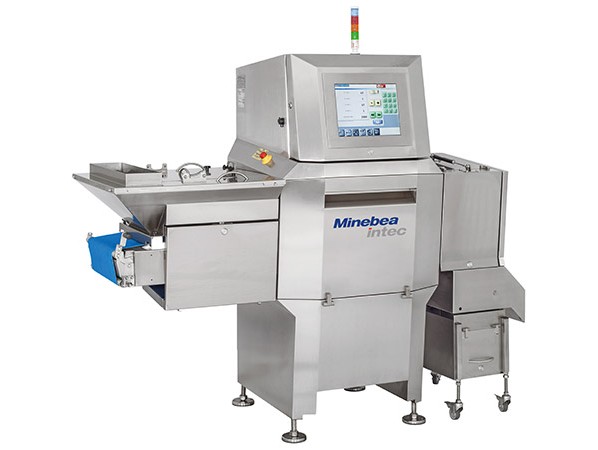
In addition to the risks mentioned above, the age of digitisation also offers significant opportunities for optimisation. The SPC@Enterprise software from Minebea Intec, for example, is a solution for process control and quality assurance in the packaging sector. “With the complete recording and processing of all device data, it can be used to orchestrate every line into a transparent and optimisable production unit,” emphasises Caroline Schröder, Global Product Manager at Minebea Intec Bovenden. Whether Minebea Intec weighing transmitters, industrial scales, checkweighers, X-ray inspection systems or solutions from other suppliers – all devices are integrated via Ethernet and their measurement data is automatically transferred to the database. All in all, the software package is characterised by its simple and intuitive use. The software is even available as a tablet version for on-site use.
Source: © Minebea Intec